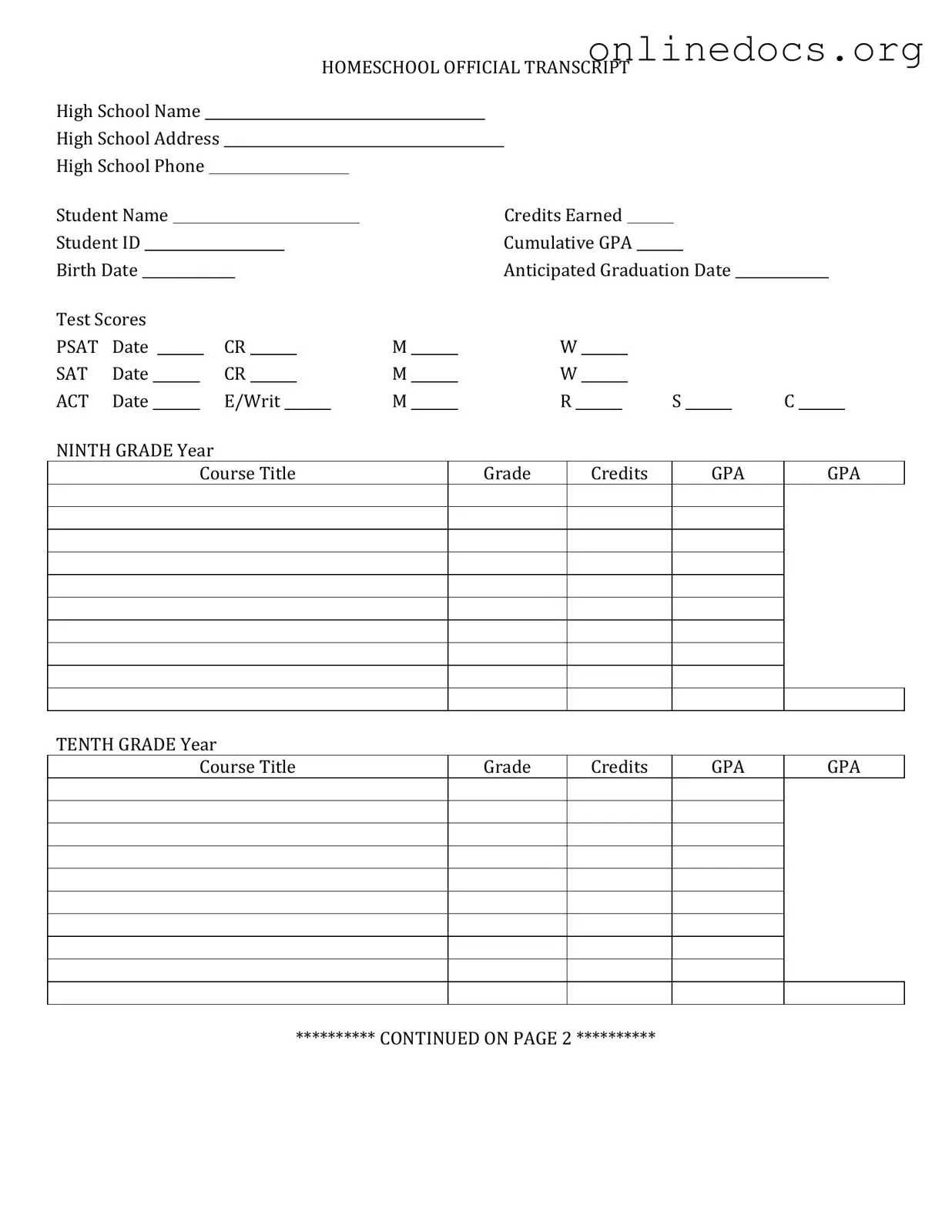The High School Diploma is a document that signifies the completion of secondary education. Like the High School Transcript, it provides proof of academic achievement. However, while the transcript details individual courses and grades, the diploma serves as a formal recognition of graduation. Both documents are essential for students looking to pursue higher education or enter the workforce.
The College Transcript is similar to a High School Transcript, but it pertains to courses taken at a college or university. It lists the classes completed, grades received, and credits earned. Just as a high school transcript is crucial for college admissions, a college transcript is important for transferring schools or applying for jobs that require a degree.
The GED Certificate is another document that parallels the High School Transcript. It is awarded to individuals who pass the General Educational Development tests, which serve as an alternative to a traditional high school diploma. Like a transcript, the GED Certificate provides proof of educational achievement, allowing individuals to pursue further education or employment opportunities.
A Bill of Sale form in Pennsylvania serves as a formal document that records the transfer of ownership from a seller to a buyer. This document is critical in the sale and purchase of personal property, ensuring that the transaction is legally documented. While the content of the form itself is not provided here, understanding its purpose and usage is essential for any transaction it covers. For more information, you can visit legalformspdf.com.
The Report Card is a document that shares similarities with the High School Transcript, as it provides a snapshot of a student’s academic performance over a specific period, typically a semester or a year. It includes grades for individual subjects and may also offer comments from teachers. While report cards are more frequent and less comprehensive, they still serve as an important tool for tracking academic progress.
The Academic Record is akin to a High School Transcript, as it contains a detailed account of a student’s educational history. This document may include information about courses taken, grades, and any honors received. It is often used for college applications and can be requested by students to provide a comprehensive view of their academic achievements.
The Course Syllabus is similar in that it outlines the content and expectations of a specific course. While it does not serve as an official record of grades, it provides students with an understanding of what they will learn and how they will be assessed. Both documents are essential for students to understand their academic journey and requirements.
The Certificate of Completion is another document that resembles the High School Transcript. It is awarded to students who have completed a specific program or set of courses, even if they have not met all the requirements for a diploma. This certificate serves as proof of educational accomplishment and can be beneficial for job applications or further studies.
The Personal Statement or Statement of Purpose often accompanies academic records when applying to colleges. While it is not an official transcript, it shares similarities in that it provides insight into a student's motivations and aspirations. Both documents are used to present a comprehensive view of a student’s qualifications and readiness for further education.
Lastly, the Letter of Recommendation can be compared to a High School Transcript in that it provides a third-party perspective on a student's abilities and character. While the transcript presents quantitative data, the letter offers qualitative insights. Both documents are often required in college applications and help admissions committees understand the applicant beyond grades alone.
